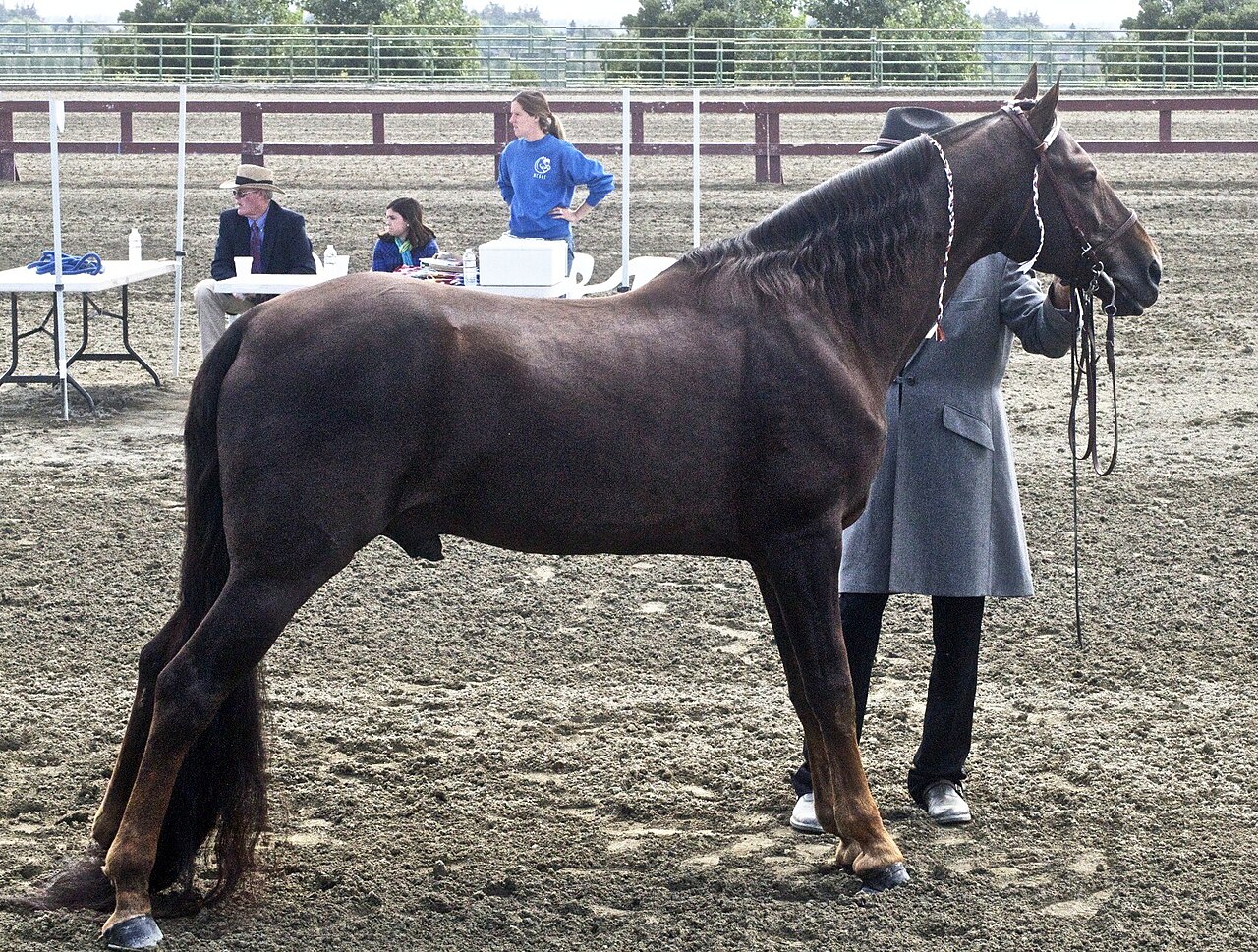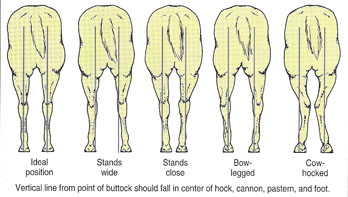 Tennessee Walking Horse photo by Just chaos. https://commons.wikimedia.org/w/index.php?curid=7128467
Tennessee Walking Horse photo by Just chaos. https://commons.wikimedia.org/w/index.php?curid=7128467
In a new study published in Physiological Genomics, researchers explored the role of genetics in the conformation of Tennessee Walking Horses. In other words, how close each animal they sampled looked to an "ideal" Tennessee Walking Horse. According to Kylee Jo Duberstein (Department of Animal and Dairy Science, University of Georgia), there are five criteria that are examined when evaluating the conformation of a horse. These include "balance, structural correctness, way of going, muscling and breed/sex character."
 Ideal conformation (far left) and common structural "flaws" as presented in http://extension.uga.edu/publications/detail.cfm?number=B1400
Ideal conformation (far left) and common structural "flaws" as presented in http://extension.uga.edu/publications/detail.cfm?number=B1400
To study the relationship in Tennessee Walking Horses, researchers sampled DNA and analyzed body measurements as well as gait in 282 horses. They were able to identify a specific gene region that is associated with variations in skeletal size of the animals.
Perhaps this information will lead to changes in the breeding of horses.
Sources:
Duberstein KJ. Evaluating Horse Conformation. Department of Animal and Dairy Science. University of Georgia, 2012.
